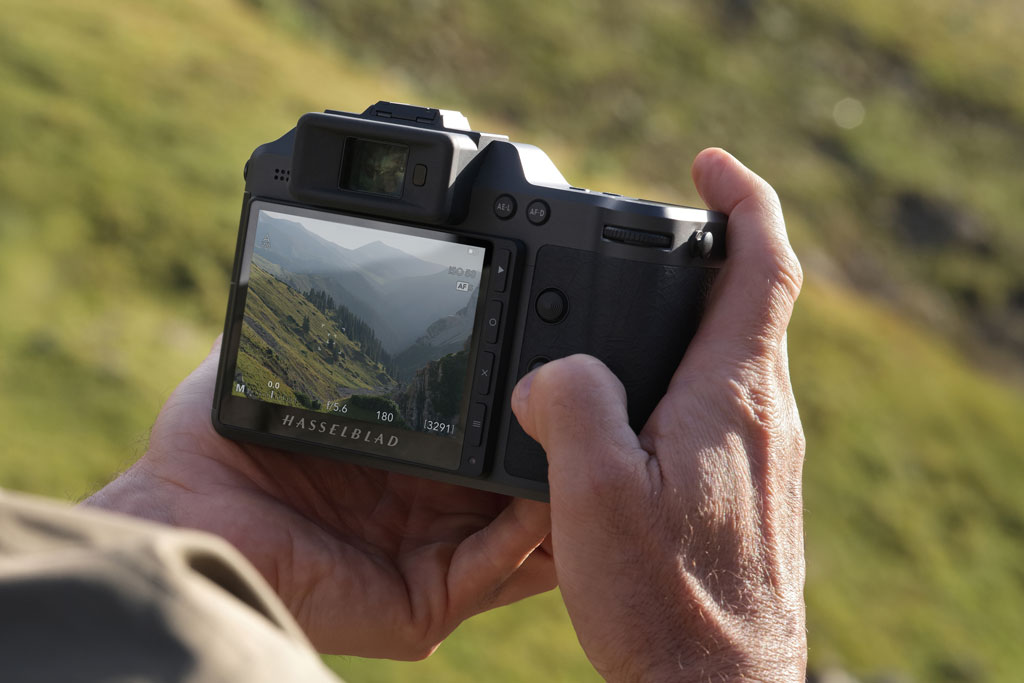Hasselblad has launched the latest iteration of its medium-format mirrorless camera, in the shape of the X2D II 100C. It comes with a number of major updates over its three-year-old predecessor the X2D, with the most striking being the addition of LiDAR assisted autofocus, and what Hasselblad is calling “end-to-end HDR”. Hasselblad is also accompanying the new camera with a new standard zoom lens with flagship optics, the XCD 2,8-4/35-100E.
In terms of the basic design and core spec, the X2D II is mostly unchanged. It places a 100MP BSI-CMOS sensor measuring 43.8 x 32.9mm in an SLR-shaped body, with a prominent handgrip and central viewfinder, and distinctively squared-off styling. There’s a large tilting touchscreen on the back.
Notably, the X2D II becomes Hasselblad’s first camera to support continuous autofocus. This is aided by Light Detection and Ranging (LiDAR) technology that’s borrowed from parent company DJI. There are now 425 Phase Detection points, rather than 294, and a new AF illuminator aids with low-light focusing.
In a striking first, the camera supports “end-to-end HDR” imaging. This aims to enhance highlight retention and deliver greater overall tonal depth. HDR images are processed in-camera as HDR HEIF or Ultra HDR JPEG and can be viewed using the 3.6in OLED screen, which boasts an impressive 1400-nit peak brightness. Raw files can be processed on iPhone and iPads using the firm’s Phocus Mobile 2 app while retaining HDR information.

Other key updates include a new lower native sensitivity of ISO 50, which promises 15.3 stops of dynamic range. The in-body image stabilisation has also been uprated and now claims a remarkable 10 stops of shake reduction for hand-held shooting. A newly added joystick enables quick focus point selection and menu navigation.
New standard zoom lens
To go with the X2D II 100C, Hasselblad has created a new XCD 2,8–4/35–100E lens. With a 28-76mm equivalent range, it’s designed for a wide range of subjects including landscapes, portraits, and street photography. The ‘E’ badge signifies premium optical performance via a 16-element, 13-group design that includes three aspherical and 5 extra-low dispersion (ED) glass elements. An integrated leaf shutter provides speeds from 68-1/4000sec, with flash sync at every speed.
In terms of pricing, the Hasselblad X2D II 100C will cost $7,399 / £6,400 body-only, which is almost £1000 less than its predecessor. Meanwhile the Hasselblad XCD 2,8–4/35–100E will be $4,599 / £4,100.
Read our first impressions of the new Hasselblad X2D II 100C
Follow AP on Facebook, Instagram, YouTube and TikTok.






